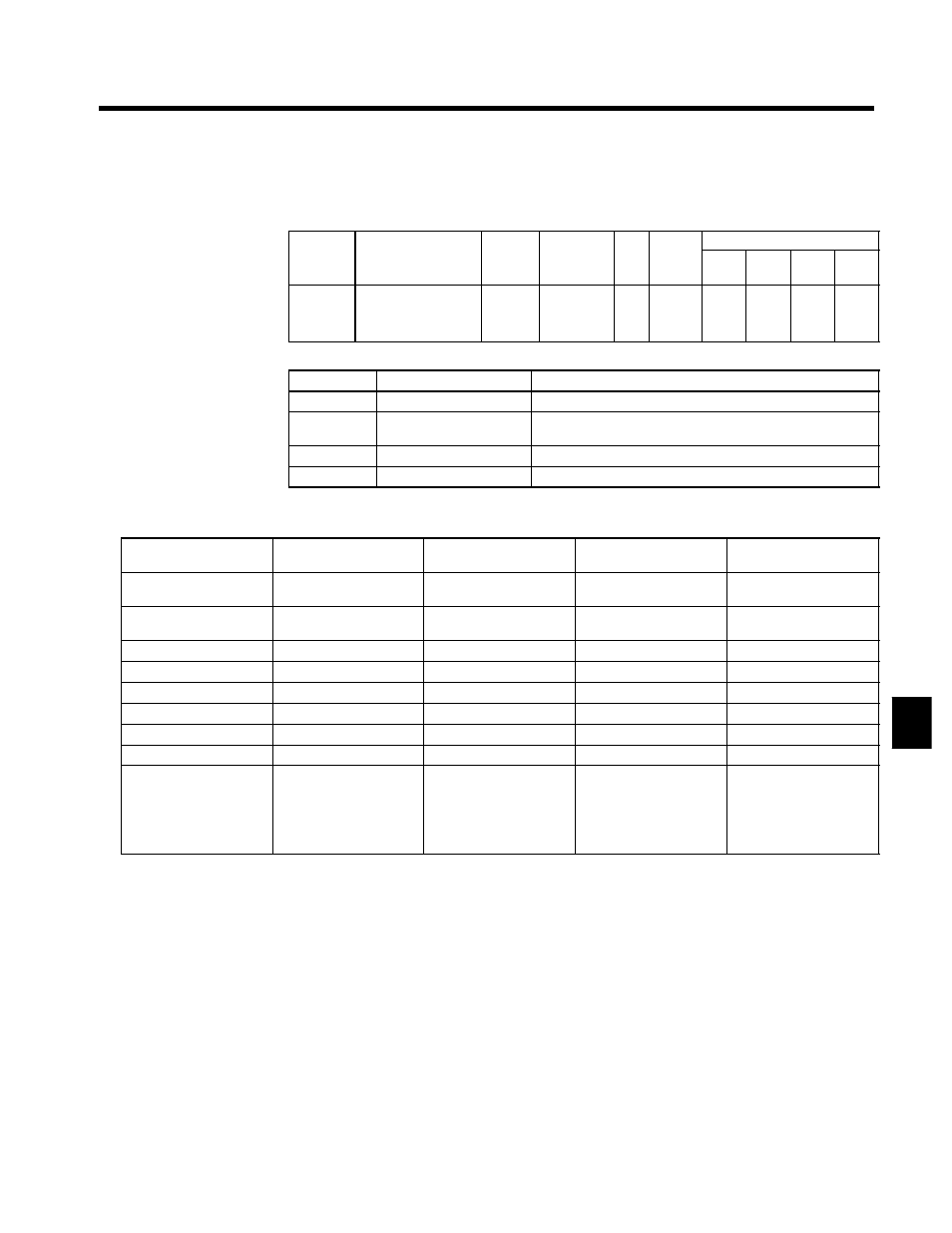Control method: a1-02 – Yaskawa G5HHP Drive User Manual
Page 121

6.1 Common Settings
6 - 3
J
Control Method: A1-02
D
Select one of the four control methods.
D
This constant is not initialized by the initialize operation.
User
Change
during
Setting
Factory
Valid Access Levels
User
Constant
Number
Name
g
during
Opera-
tion
Setting
Range
Unit Factory
Setting
V/f
Control
V/f with
PG
Open
Loop
Vector
Flux
Vector
A1-02
Control method selec-
tion
x
0 to 3
--
2
Open
Loop
Vector
Q
Q
Q
Q
D
Control Method Settings
Setting
Control Method
Function
0
V/f control
Normal V/f control
1
V/f control with PG feed-
back
V/f control using a PG Speed Control Card
2
Open loop vector control
Vector control using the Inverter’s internal speed information
3
Flux vector control
Vector control using a PG Speed Control Card
D
The characteristics of each control method are shown in Table 6.1.
Table 6.1 Control Method Characteristics
Characteristic
V/f Control
V/f Control w/PG Feed-
back
Open Loop Vector
Flux Vector
Basic control method
Voltage/frequency control
(open loop)
Voltage/frequency control
with speed compensation
Current vector control
without PG
Current vector control with
PG
Speed detector
Not required
Required
(pulse generator)
Not required
Required
(pulse generator)
Optional speed detectors
Not required
PG-A2 or PG-D2
Not required
PG-B2 or PG-X2
Speed control range
1:40
1:40
1:100
1:1000
Starting torque
150%/3 Hz
150%/3 Hz
150%/1 Hz
150%/0 r/min
Speed control accuracy
±2 to 3%
±0.03%
±0.2%
±0.02%
Torque limit
Not possible
Not possible
Possible
Possible
Torque control
Not possible
Not possible
Not possible
Possible
Example applications
S
Multiple motor drives.
S
Replacingexistingmotor
for
which
motor
constants are not known.
S
When autotuning is not
possible.
S
Simple speed feedback
control.
S
When a pulse generatoris
attached to the machine
axis.
S
Variable speed drive ap-
plications.
S
Simple servo drives.
S
Precision speed control.
S
Torque control.
D
Vector control has a greater starting torque and more precise speed control than V/f control, so use of
vector control is recommended whenever possible.
Use V/f control in the following types of applications:
•
When several motors are being operated
•
When special motors, such as submersible motors or spindle motors, are being used
(situations in which auto-tuning cannot be used)
•
When operation is being coordinated with an older V/f control inverter control system
6
